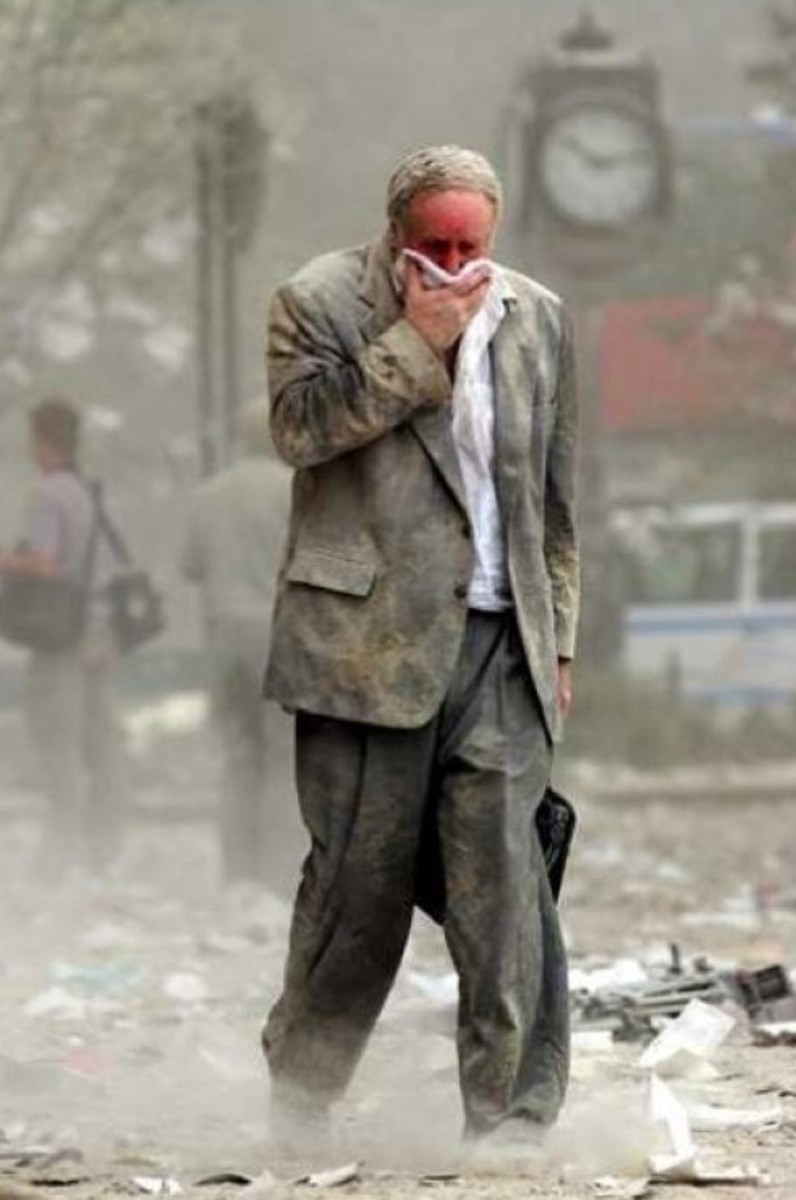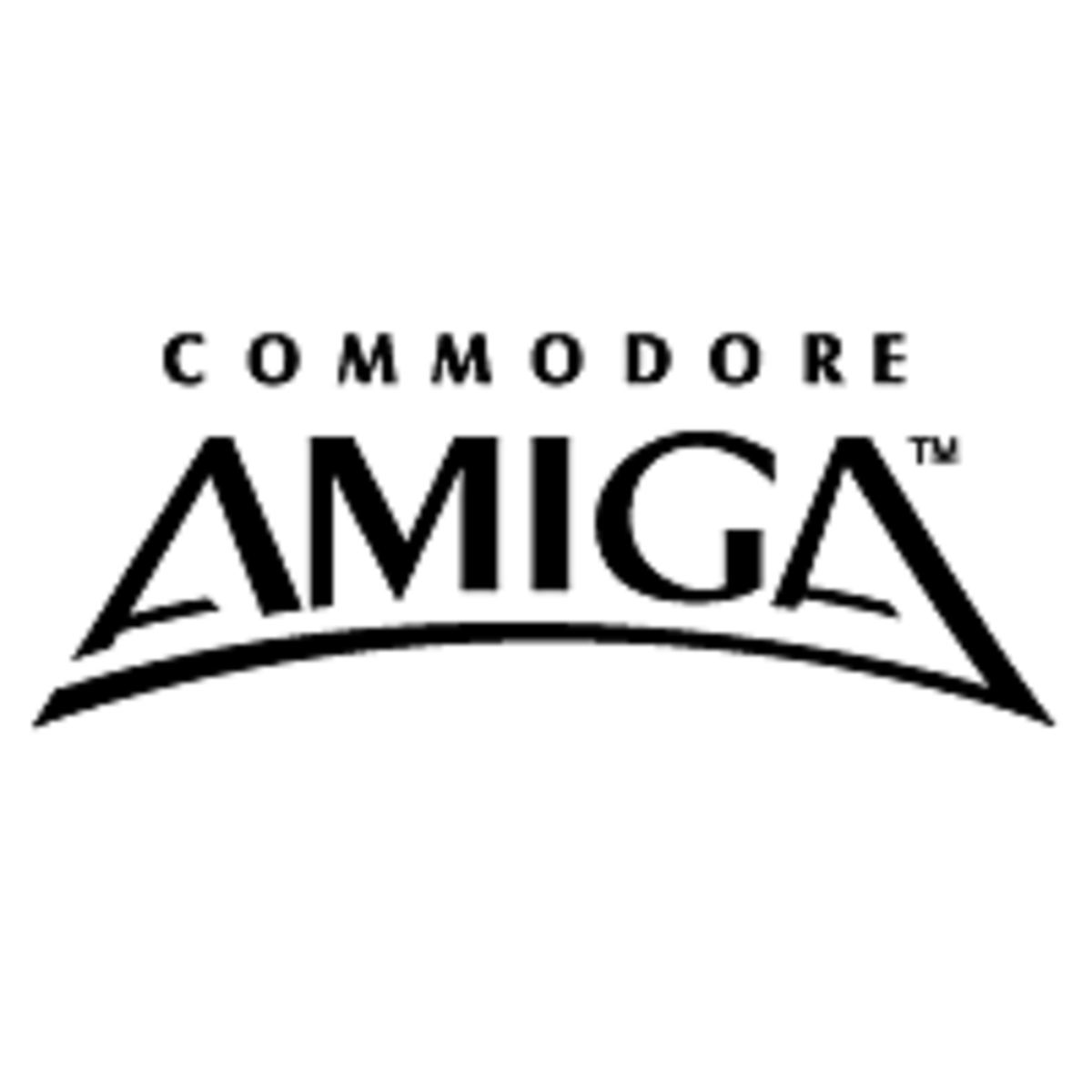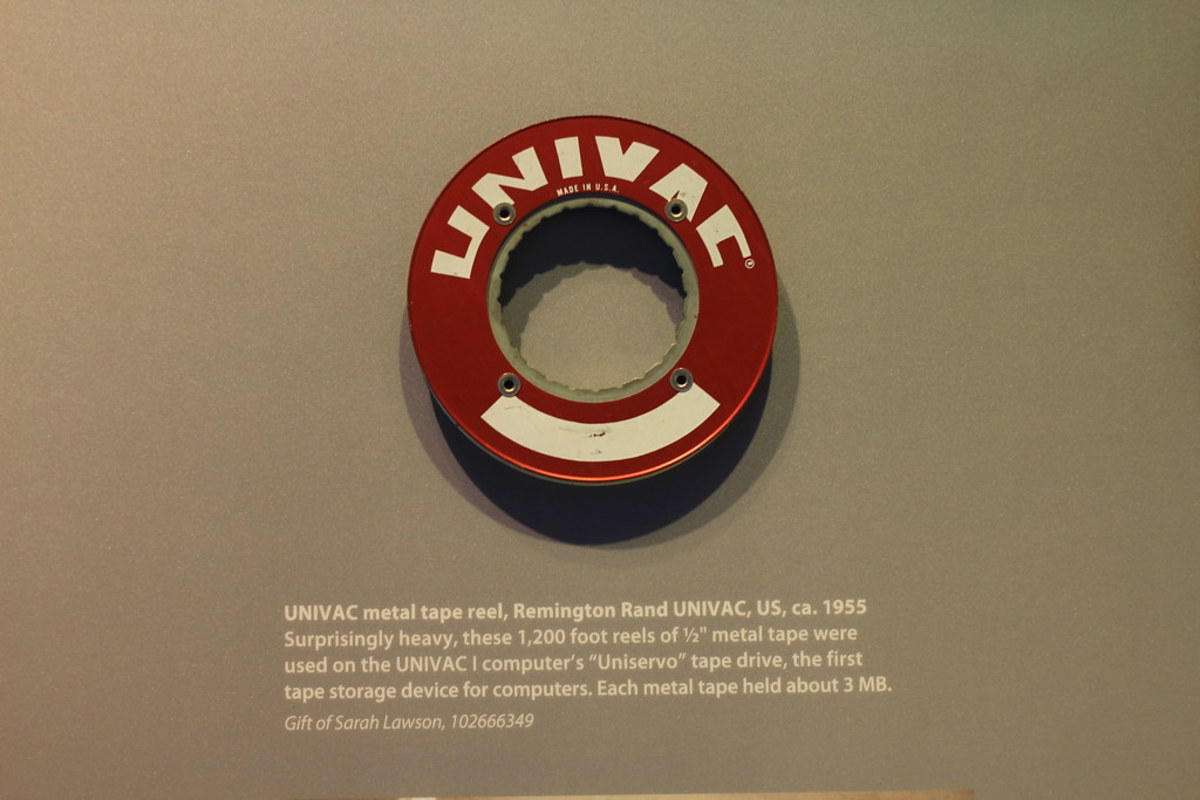The Dark Side of the Techno-boom: Illness and Death in the Semiconductor Industry
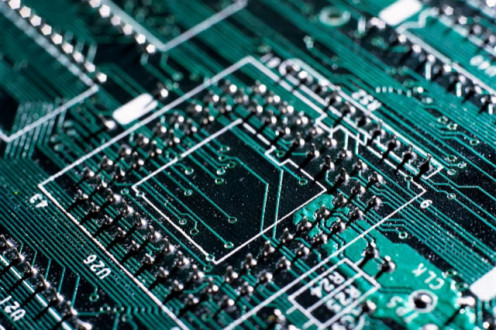
Introduction: the advent of the silicon microchip
They're in virtually every appliance and piece of electronic equipment we rely on in our everyday lives, from TVs, to computers, to dishwashers, to cars, to the ubiquitous smartphones almost all of us now have. They're incredibly small, and buried so far in the inner workings of these devices that we never get to see them. Guessing game over..what are they?
The silicon microchip (or "integrated circuit").
At its most basic, the silicon chip is a wafer thin slice of polished silicon, less than a millimetre thick, and about the size of a fingernail. On this tiny piece of metal are packed billions of individual circuits - transistors, resistors and diodes, tightly packed and embossed onto the chip using photo lithography. These tiny devices are so powerful they can drive an entire appliance or piece of complex technology.
The advent of the chip revolutionalised the world of computer technology, and made it possible to create ever smaller, and more complex devices that could perform a myriad of different tasks. Designing, creating and manufacturing these chips became big business, and for the handful of companies in the market, was (and still is) extremely profitable. We've all heard of 'Silicon valley'. Names such as Samsung, Intel and ST Microelectronics dominate the market, and operate huge semiconductor manufacturing plants (or "fabs" as they're called in industry-speak), around the world -with many of these in Asia.
The story has largely been one of success, especially at an economic level. However there's a dark side to this industry that's become increasingly worrisome over the past 15 years as the long term effects on factory workers of working with semiconductors have started to become apparent. Quite simply, they've been getting sick and dying in statistically significant numbers, of cancers and other diseases that shouldn't normally affect younger people in such a way.
How much do you know about silicon chips?
view quiz statisticsThe word "clean" in "clean rooms" refers to the chips themselves, not to conditions for the workers
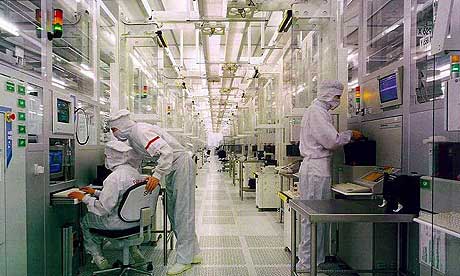
The problem: A Toxic Chemical Cocktail in the Clean Room
In 2014 the Korean tech giant Samsung issued a public apology and promised to compensate silicon chip factory workers who had contracted leukemia and other cancers as a result of working in 'clean rooms' in Samsung's semiconductor fabrication plants.
After many years of denials and evasion of responsibility, and a series of very public protests by the families of dead or ill workers, Samsung, stopping just short of admitting actual fault, agreed to compensate the workers for medical expenses and loss of income from their illnesses.
How did this all happen? The problem seems to be the cocktail of dozens of different chemicals (many highly toxic) that are used in the manufacture of silicon 'wafers' (the raw material for chips), and in the chips themselves. Chemicals are used to bathe, wash, scrub, bombard and emboss the chip surfaces to create various areas of conductivity (or resistance), and workers are frequently exposed either directly to these chemicals on their skin, or by breathing in the vapours generated and circulated within the 'clean rooms'.
Photos of chip plant workers wearing 'bunny suits' (the big boiler type suits, with gloves and shoe coverings) that are often depicted in fabrication plant publicity materials, paint a misleading picture of the level of protection workers get in these manufacturing plants. The purpose of the suits is not to protect workers from dangerous chemicals and gases -rather it's to protect the product itself from the risk of dust and other pollutants entering the manufacturing environment. Workers must don the 'protective' suits before entering the clean room (which is the main manufacturing environment for silicon chips), and they are hosed with a high pressure air hose to remove any dust particles from them, but once in the clean room, they spend an 8-12 hour shift exposed to a toxic cocktail of different chemicals, via the 'clean' air which is recirculated many times around the factory space, without any fresh air being ventilated in.
What kind of chemicals are used? Many are 'organic solvents' such as benzene, trichloroethylene, ethylene oxide, Arsine gas, and arsenic trioxide. Some of these have proven health risks, such as carcinogenicity, or links to respiratory illness. When used together, their effect is unknown and untested. The semiconductor manufacturing companies such as IBM, Samsung and Intel have been using such chemicals for many years in their factories all around the world.
Over the past 20 years an alarming number of workers and former workers from chip plants have been diagnosed with cancers such as leukaemia, breast cancer and brain tumours, thought to be linked to their work at the semiconductor plants. In some cased (see 'Yumi's case' below), the cancer came on not more than 5 years after starting at the plant, and occurred in workers (mainly young women) in their 20s or 30s.
For example at a single Samsung fabrication plant (the Giheung facility south of Seoul), 17 production workers, 11 of them female (and with an average age of 26) were found to have cancers linked to the chemicals used in production -these includes leukaemia and non-Hodgkins lymphoma.
Were there warning signs the company could have heeded? Absolutely. Female workers on the production lines reported increased headaches, nausea, coughs, rashes, cramps and irregular menstruation, and even extreme symptoms such as frequent miscarriages in pregnancy, or trouble conceiving. These were clear signs of chronic chemical poisoning.
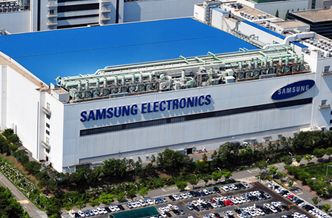
Commonly used chemicals in chip making
Chemical
| Used for
| Health risks
|
|---|---|---|
Benzene (organic hydrocarbon)
| Polishing, stripping, cleansing
| Grade 1 carcinogen: Dermatitis, respiratory problems, leukamia, central nervous system problems
|
Xylene
| Polishing, stripping, cleansing
| Skin problems, pulmonary edema, central nervous system problems, menstruation difficulties
|
Trichloroethane)
| Grade 1 carcinogen, kidney and liver damage, central nervous system problems, irregular heartbeat
| |
Tetrachloroethane
| Similar to above, blood changes including anemia, paralysis and numbness in limbs
| |
Ethylene Glycol
| Carconigenic, blood and tissue abnormalities, nervous system problems,
| |
Arsine gas
| Ionising
| eye irritation, skin cancer, liver, kidney and heart damage, abdominal pain
|
Hydrogen Chloride gas
| Ionising
| Fluid in lungs, extreme eye and skin irritation
|
“I believed they attempted to silence me with money. Samsung believed that I would stop taking issue with it after being paid. However, I wouldn’t. More and more victims began to come out. I already knew there were six more at least. I believe that there must be no more victims.”
— Hwang Sang-ki (father of Yumi)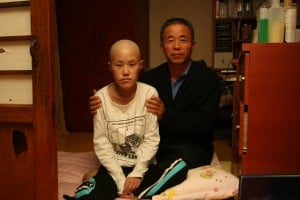
The Fatal "Line 3" at Giheung Fabrication Plant
Serious concerns about health risks at Samsung's semiconductor fabrication plants surfaced roughly seven years ago, when there were two deaths, very close in time to each other, of two women who had worked side by side on 'Line 3', a production line at Samsung's silicon wafer foundry (or fabrication plant) at Giheung, about 30km south of Seoul.
Here is a link to an excellent Al Jazeera investigation on Samsung's plant.
The story became very public -embarrassing Samsung with its consumer public in Korea and elsewhere, early last year, when two movies came out about cancer risk in the semiconductor industry. One was a documentary, and the other, 'Another Promise', a thinly veiled biographical account of the life and death of Yu-mi, a young woman who had worked at Samsung's Giheung plant for only four years before her death from leukaemia.
The first death (in 2007) was that of Hwang Yu-mi, a 23 year old woman who had started working at Samsung's Giheung plant after leaving school at 19, and had worked there for only two years before contracting an acute, aggressive form of leukaemia. The second death, only months later, was that of 30 year old Lee Suk-yeong, who had also worked on Line 3 at the plant next to Yu-mi, and who also died of leukaemia. Yu-mi's father, a taxi driver, realised the two deaths had to be linked, and he went on a crusade to prove the link, and to get compensation from Samsung and an apology for his daughter's death.
Yu'mi's story begins, like many others, with an eager young woman, fresh out of high school, who went to work for the Samsung factory to earn money to help support her working class family and help put her younger brother through university. She lived in a two storey dormitory on the Samsung site with other female workers, and worked long shifts at the plant -sometimes at night.
Yu-mi was assigned to Line 3, according to court documents. She covered herself head to toe each day in a white cleanroom suit, gloves, and cloth mask—not so much to protect herself but to maintain a dust-free environment for the semiconductors. Her line produced the Samsung logic or “system” chips that drive gadgets, rather than the ones that store data. Yu-mi’s first job involved a process known as diffusion. Her second was in “wet etching” on the same line.
Throughout her eight-hour shifts, Yu-mi was exposed to a lethal cocktail of potentially dangerous chemicals, fumes, and ionizing radiation, a panel of Korean court judges later found. Yu-mi's father says his daughter told him her work involved dipping batches of silicon wafers into huge vats of toxic chemicals, and then lifting those carousels out by hand. Workers were given no protection from the chemicals, or the fumes.
One of her co-workers in wet etching, Lee Suk-young, had developed skin irritations that required her to get regular medical treatment.
Other than describing her fatigue, Yu-mi didn’t complain to her parents, until she phoned home late in October 2005, saying “she felt nauseous, dizzy, and she was vomiting,” her father says. One of the other workers brought Yu-mi to a Samsung infirmary in the Giheung compound, where personnel drew and tested her blood. They told Yu-mi something was wrong, something they couldn’t deal with. She was admitted urgently to the closest major hospital.
After being diagnosed, Yu-mi began chemotherapy, and Samsung helped with her medical expenses. However the company turned hostile when Yu-mi's father indicated he wanted to file a workers' compensation claim. Later, as the case got closer to court, Samsung tried to buy Hwang's silence with payments of up to $1 million. He refused -he had made a promise to his daughter which he fully intended to keep.
Yu-mi's, and a number of others, were taken to KCOMWEL -Korean Workers Compensation and Welfare Service. KCOMWEL declined compensation in 2009 (mainly because a government funded study hadn't shown a proven link between the semiconductor industry and cancer), and the case was appealed to Seoul's administrative court in 2011.
The Court's decision makes for very grim reading:
- Yu-mi worked on Line 3, which prior to 2004 was a largely 'manual' production line. This meant the processes weren't fully automated, and workers had to do a lot of things by hand -exposing them more frequently to the toxic chemicals used in fabrication;
- Prior to 2009 Samsung hadn't banned the use of four carcinogenic chemicals -benzene, formaldehyde, ethylene oxide and arsenic . These were banned after 2009, but too late for Yu-mi;
- Yu-mi's work bay was only 80m away from the ion radiation machine, which used ionising rays to bombard the surface of the wafers. This may have exposed her to radiation;
- Gas drifted and leaked from other production processes into Yu-mi's workspace, and wasn't properly ventilated away.
There were many other findings made, and in the end the court supported a probable link between Yumi's cancer and her workplace, Samsung. It ordered compensation.
Yumi’s memorial day is getting closer. I will fight on until no workers become ill because of their jobs, and until they will be fully compensated for their illnesses once they become ill.
— Hwang Sang-ki (father of Yumi)Chip Fabrication process
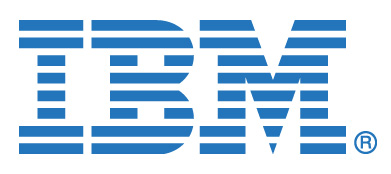
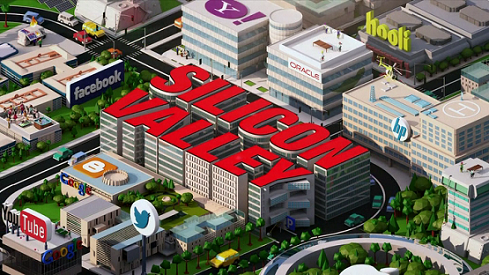
IBM and Silicon Valley: Early Warning Bells?
Across the other side of the Pacific ocean, south of San Francisco, in 'Silicon Valley', during the hi-tech equivalent of the gold rush era from 1975-2000, there were early warning signs of problems to come in the semiconductor industry.
IBM was one of early players in the silicon chip fabrication market. Its Cottle Road semiconductor plant in the San Jose valley, South of San Francisco, was built in 1958. It built disk drives for the emerging computer industry and later, silicon wafers. Along with factories operated by Hewlett Packard, Intel, Applied Materials and national Semiconductor, Silicon Valley is home to no fewer than 29 contaminated 'superfund' sites (sites that suffer from serious toxic contamination, and must be cleaned up using federal funding). These factories operated underground wastewater collection tanks, which leaked over time -causing streams and groundwater in the area to become polluted, and in turn affecting drinking water supplies for residents. Cancer rates in the valley soared in the 30 years these plants operated. Lawsuits were lodged against IBM and other companies, alleging high rates of birth defects and deformities in children born to Silicon valley residents.
What about the workers in these plants? In 1998 the first of a series of major lawsuits was filed by five IBM cleanroom workers -alleging that the company had hid from them the risks posed by the toxic chemicals they worked with in the cleanrooms -chief among these risks being cancer, and fetal abnormalities. The workers also sued chemical supply companies to IBM, such as Eastman Kodak, and Union Carbide. The chemicals in question were mainly organic solvents -the same range of chemicals affecting Korea's Samsung workers a decade later.
Alicia Hernandez is now 43. She spent 14 years working in IBM's semiconductor plant at Cottle Rd, bathing disks in a chemical wash. Nobody warned her of the risks to her health. Often she'd get the chemicals on her clothing and skin, since part of her job involved cleaning the coating machine after a run of 50 disks had been through it. She was responsible for cleaning the machinery with solvents several times throughout each working day. Hernandez was exposed to acetone -a solvent that can cause drowziness, dizziness, headaches, and liver and kidney damage with acute exposure.
The spray coating for the disks contained xylene -an organic solvent similar to the highly toxic benzine, that has been linked to cancer. She would breath in the spray mist from this when coating the disks. Disk coatings also contained epoxy resins - also found to be carconogenic and mutagenic, and associated with reproductive harm. Another 'prime suspect' in the cancers afflicting IBM's workers was trichloroethane -TCA (supposedly a 'safe' substitute for the known carconogen Trichloroethylene (TCE), which is still frequently used in the drycleaning industry). TCA was found in the 'solvent plume' found to be spreading below IBM's Cottle Rd plant in the company's 1991 toxicological report, so it's very likely it was used in the clean room. Far from being safe, the substance has also been linked to cancer.
It's small wonder then that Hernandez became sick, like many of her fellow clean room workers. In 1993 she was diagnosed with breast cancer, and since she had none in her family, she quickly drew a link to her working conditions (many of her female colleagues at the plant also developed breast or ovarian cancer).
Silicon valley wasn't the only 'canary in the mine'. By 2003 almost 300 lawsuits had been lodged by workers at the East Fishkill IBM semiconductor plant. The focus of these were on rare cancers caused to employees, and birth defects and deformities caused to the children of former IBM workers. The lawsuits claimed IBM had knowingly exposed workers to these risks, in the interests of profit in a booming computer high-tech industry in the 70s and 80s.
Zachary Ruffing (15) was born blind and with facial deformities so severe he cannot breathe through his mouth or nose. His parents (both clean rook workers) sued for $40 million in damages, and IBM settled without admitting guilt. Other Fishkill cases name cancers of the gastrointestinal and lymphatic systems; of the skin, bone and brain; and, most commonly, of the breast and testes. Workers were becoming sick and dying in their 20s of these cancers.
Workers in these lawsuits pointed to IBM's actions over the years as demonstrating knowledge of the risks posed by the clean room chemicals. They say they were regularly tested by IBM doctors, but were not given the results of these tests. They say that chemicals labelled as 'toxic' (sometimes referring to specific risks, such as to the testes), were taken out of containers and transferred to other, generic containers without warning labels on them (keeping workers in the dark about the risks posed).
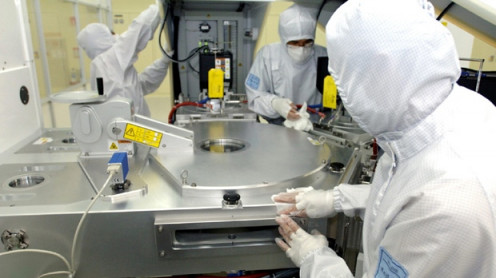
Have the lessons been learnt?
The semiconductor industry (represented by the Semiconductor Industry Association -SIA), contains to assert that it's one of the safest industries for workers. On its website the SIA states:
"The semiconductor industry has an outstanding safety record for workers at fabs. SIA surveys its companies annually, and the incidents of injuries and illness in the semiconductor industry are well below the national average.
In addition, SIA has led efforts to study the health impacts of semiconductor manufacturing on cleanroom workers. SIA commissioned an exhaustive, five-year epidemiological study conducted by researchers from Vanderbilt University that covered more than 100,000 semiconductor industry workers. The findings of the study were published in Journal of Occupational and Environmental Medicine and concluded: “Work in the US semiconductor industry, including semiconductor wafer fabrication in cleanrooms, was not associated with increased cancer mortality overall or mortality from any specific form of cancer.” The study also found no evidence of increased mortality from all causes or from all cancers when comparing employees working in cleanrooms to non-fabrication workers. "
The study referred to by the SIA has received widespread criticism from workers' rights groups. It was conducted by Vanderbilt University researchers over 5 years and covered 100,000 clean room workers. The criticisms relate to selective use of disease statistics, or in some cases labelling links as "inconclusive" that seem to show a clear correlation with disease.
Unfortunately until there's clear and irrefutable scientific proof (rather than anecdotal evidence) that clean room chemicals cause cancer and birth defects, it's likely the semiconductor companies will continue to use a range of toxic chemicals in chip fabrication. Conditions in fab plants are better than they were 20 years ago, but workers are still exposed to recirculating air full of chemical fumes and vapour, and many of the clean room processes expose them to both chemicals and radiation.
I wonder whether increased use of automation and robotics in this industry could be a way of avoiding the seemingly inevitable human cost of this industry. I hope the SIA will sponsor research into viable alternatives so this industry becomes much safer for workers. Is there even such a possibility? Click here for information on exciting new research being conducted by the University of Arizona (Tucson) into low impact methods for semiconductor manufacturing.


